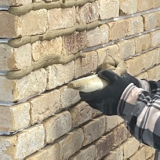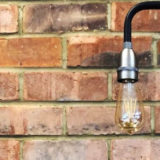When it comes to creating a distinctive, brick-laden aesthetic for your space, you essentially have two options at your disposal: real clay bricks and brick slips. Each brings its own set of advantages and drawbacks, and crucially, their costs differ significantly. In this piece, we’ll examine the cost of brick slips versus real clay bricks to provide you with the information you need to make an informed decision.
Understanding the Costs: Brick Slips Vs. Real Clay Bricks
When comparing the cost of brick slips and real clay bricks, it’s essential to look beyond the initial price tag. Let’s break down the elements that contribute to the total cost of each option.
Cost of Materials
The raw cost of materials for brick slips and real clay bricks can vary widely depending on the quality, style, and manufacturer. On average, brick slips tend to be more expensive per square foot than traditional bricks due to their manufacturing process and the convenience they offer. However, keep in mind that the thickness and size of the brick slips also play a role in their cost.
Installation Costs
Installation is typically where real clay bricks can become significantly more expensive. Because they’re heavier and thicker, real clay bricks require more time, labor, and materials to install.
On the other hand, brick slips are lightweight, thin, and easy to handle, which can considerably reduce installation time and labor costs. Brick slips can often be installed by the homeowner, which can save on professional installation costs.
Maintenance Costs
When it comes to maintenance, both brick slips and real clay bricks are relatively low-cost and low-effort. Both will need periodic cleaning and occasional sealing, especially in damp or high-traffic areas.
Calculating Total Cost: An Example
Let’s take an example. Suppose you’re looking to cover a 100 square foot wall.
For real clay bricks, considering an average cost of $5 per square foot for the bricks, and around $30 per hour for professional installation (which we’ll estimate at 15 hours for this size of wall), your total cost would be roughly $950.
For brick slips, assuming an average cost of $10 per square foot and 8 hours of installation time (due to their ease of installation), your total cost would be around $840 if you choose to do the installation yourself.
While the upfront cost of the brick slips is higher, the savings in installation costs make them the less expensive option in this scenario.
Conclusion
The choice between brick slips and real clay bricks isn’t solely a matter of cost. It’s also about convenience, installation time, and the aesthetic you want to achieve.
While brick slips can have a higher material cost, their ease of installation can often lead to a lower overall cost compared to real clay bricks. However, it’s always important to consider your specific project, budget, and design goals when making your decision.
Frequently Asked Questions
1. Are brick slips less durable than real clay bricks?
Despite their thinner profile, brick slips are manufactured to be durable and long-lasting. They can resist wear and tear and provide many years of use with proper care and maintenance.
2. Can I install brick slips myself?
Yes, brick slips are often a feasible DIY project due to their lightweight and easy-to-handle nature. This can save on professional installation costs.
3. Are there cost differences between different types of brick slips?
Yes, the cost of brick slips can vary depending on factors like their material, size, finish, and the manufacturer. It’s essential to consider these factors when budgeting for your project.


































